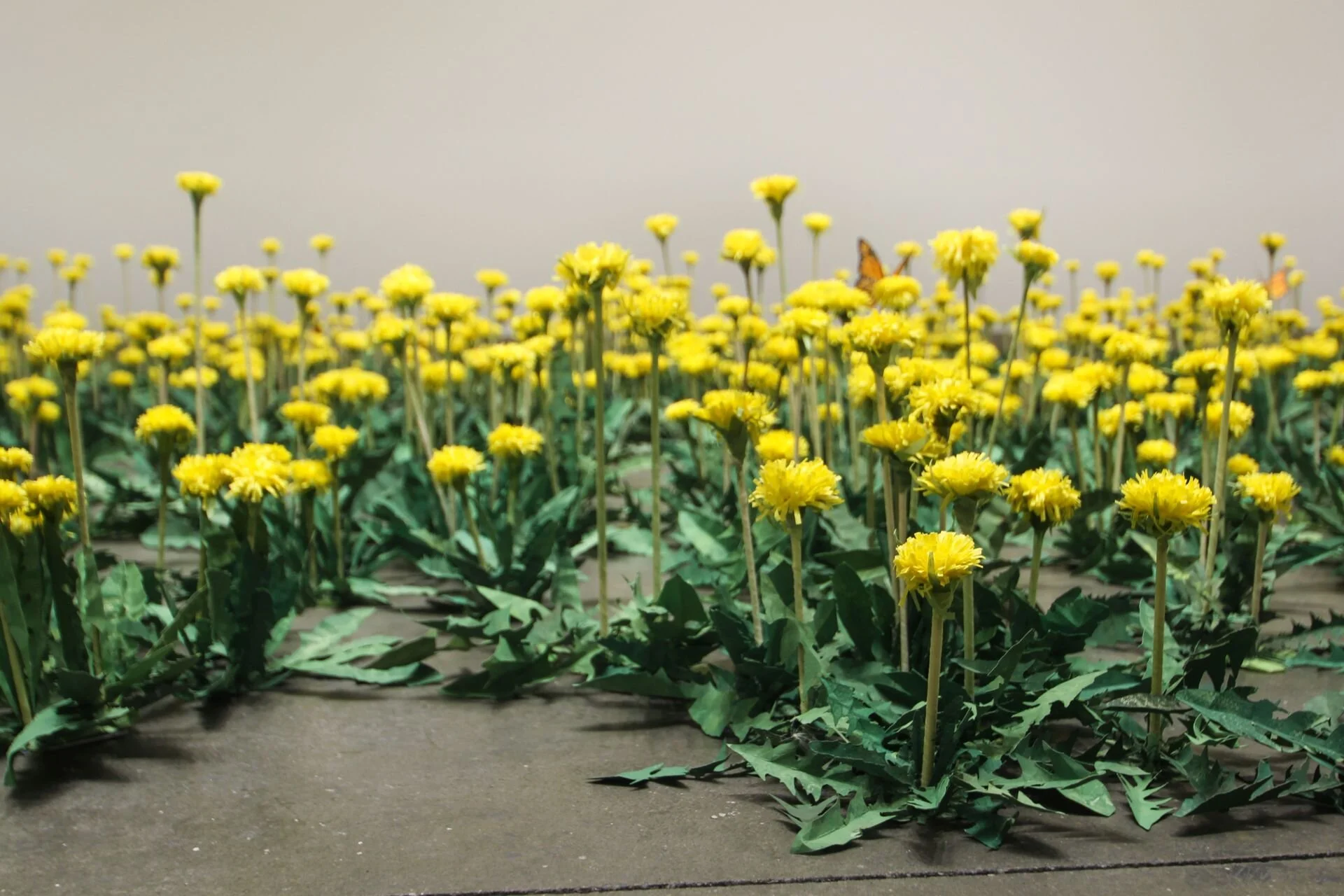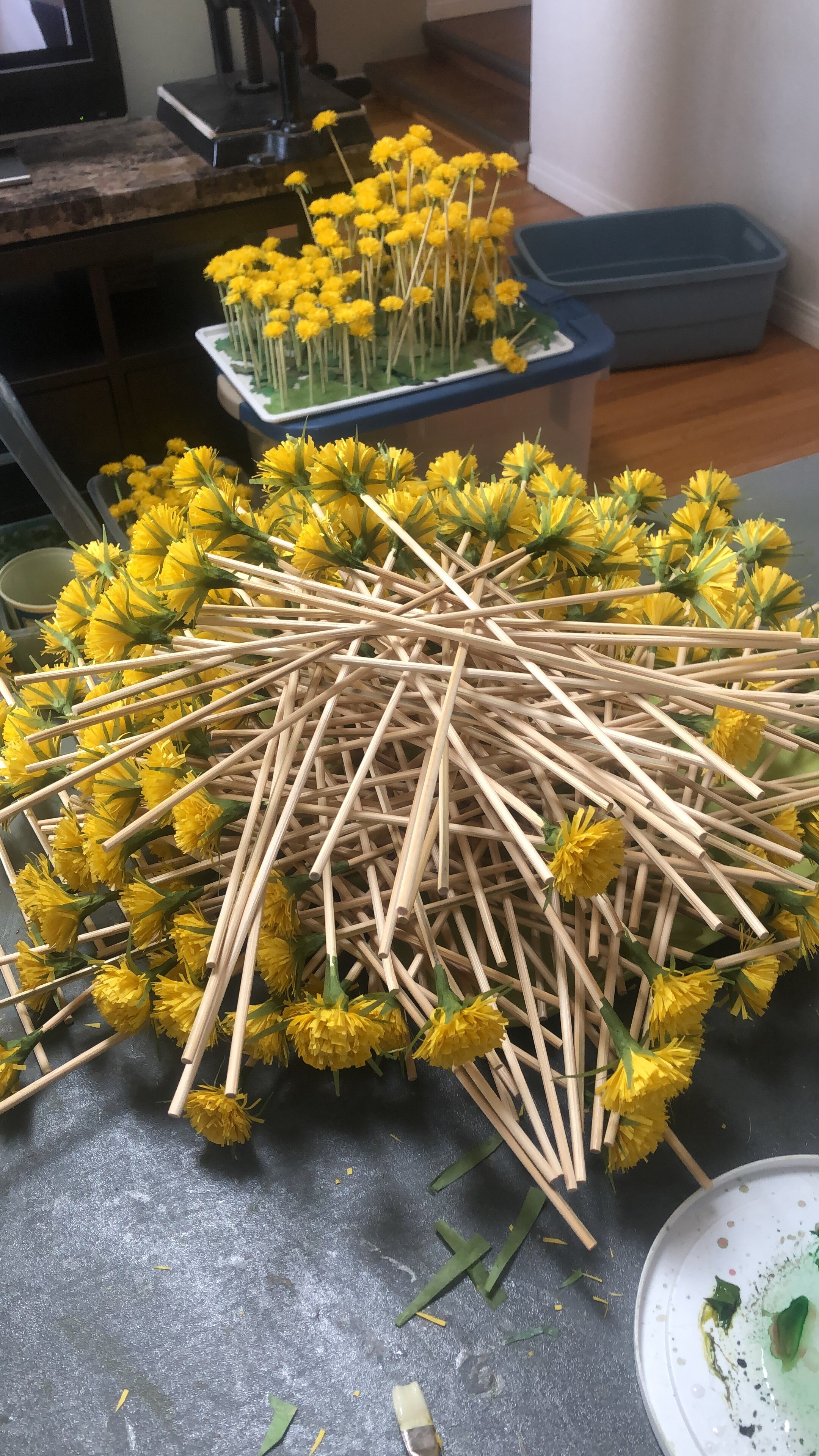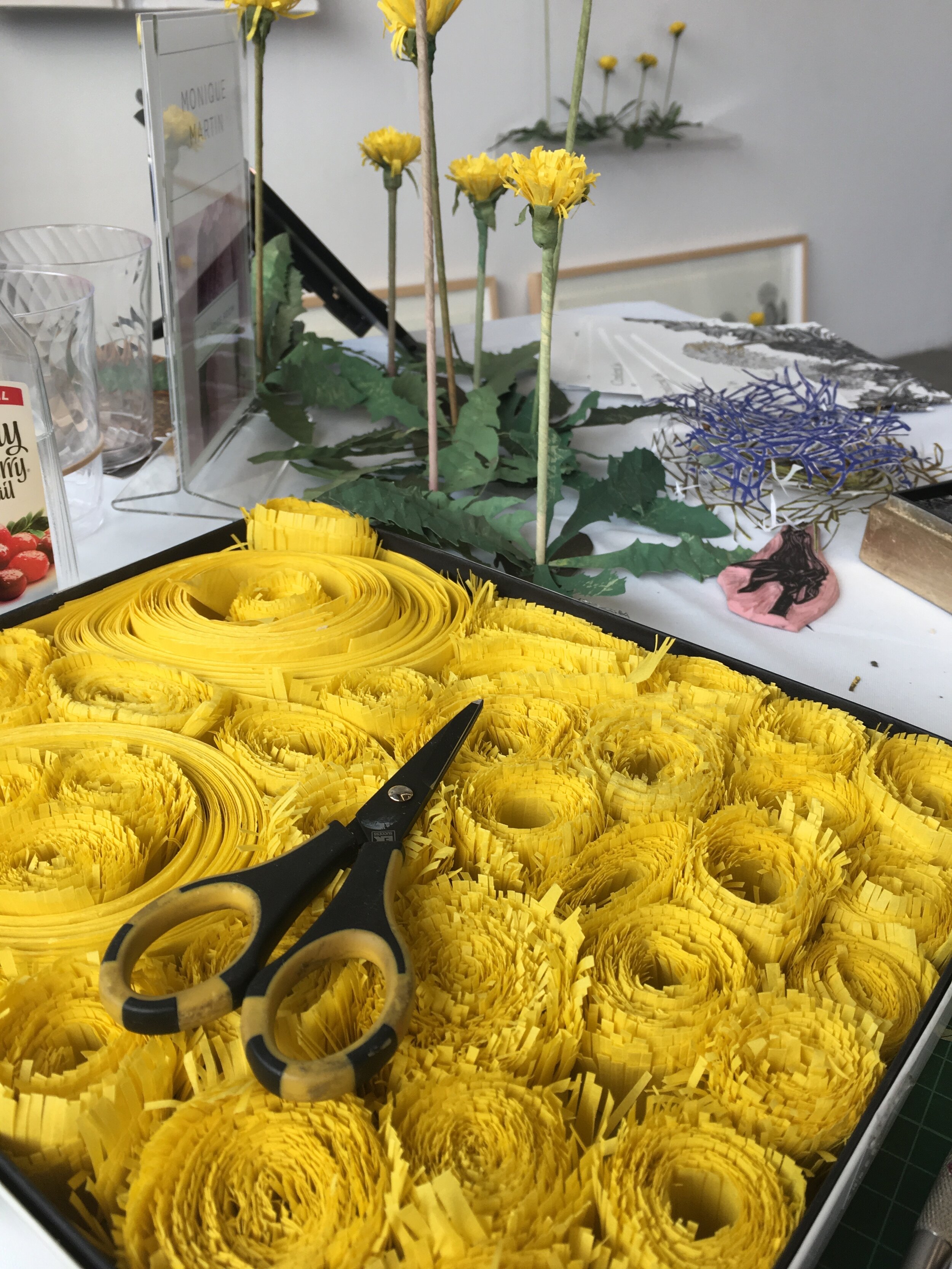Stir Q&A: Artist Monique Martin talks folding, hand-cutting, and the enduring symbol of the dandelion in a pandemic
The meticulously created weeds are sprouting at Gallery George, Seymour Art Gallery and beyond
Monique Martin. Photo by Trint Thomas
Part of the dandelion installation at Gallery George. Photo courtesy @thegallerygeorge
The Context Is Everything installation at nthe Seymour Art Gallery. Photo courtesy Seymour Art Gallery
WALK BY East Van’s Gallery George and you’ll see a flurry of yellow dandelions sprouting not on the grass out front, but inside the glass of the windows.
This isn’t a weed problem gone wild. Look closely and you’ll see that each flower is meticulously cut and handcrafted from paper—Korean hanji, to be exact. It’s part of a cross-country project by multidisciplinary artist Monique Martin, who hails from Saskatoon. She’s planted her paper posies beyond galleries, on window ledges, benches, and concrete in downtown areas of cities like Edmonton and Saskatoon.
And the project, in the works for the last few years, has taken on profound new significance in the pandemic age, symbolizing a scrappy kind of resilience. As her artist statement says: “My dandelions bloom perpetually, mementos of the growing season, springing from concrete and tile, indoors and out. The dandelion is a silent protest that is heard worldwide on sidewalks, in parks and gardens. It abhors monoculture, is open to differences and challenges stereotypes. It can be a symbol for healing from emotional pain, physical injury and surviving through all life’s difficulties as it shows us how to be strong in the face of adversity.”
You can see more at the Seymour Art Gallery in the installation Context is Everything, with hundreds of realistic paper dandelions in a sprawling installation that carpets the gallery floor. More are sprouting at the Italian Cultural Centre window; with Gallery George they’re part of the Crafted Vancouver Made To Be Discovered window installation program.
We asked Martin about the wonderful world of weeds and the work it takes to create just one of the paper flowers.
What most drew you to dandelions as a symbol, and do you think they get a bad rap?
“I was driving on the highway on my way to Gravelbourg to visit my mother-in-law. I saw the huge dandelion-like seed heads in the ditch, they are actually called ‘western goat’s beard’ and I thought, ‘Why are we rejecting something so beautiful?’ They shine in the sun, they form a perfect globe. I stopped the car and picked some. Weeds don’t require special soil, ligh,t or special water and I wondered why we don't celebrate this. We spend a lot of money and time to get the right soil, the good light, and the water for other flowers. I started to think about racism and how society can discriminate so quickly. We are so quick to make judgment. I knew the dandelion and the connection to racism was strong; it evolved a bit with COVID and became a bit of a mental health symbol, but it started with racism.
“With the pandemic the resilience, strength and perseverance of the dandelion has become the focus. The not-giving-up attitude the flower has. It grows anywhere. It grows where it is planted, just like we have had to grow where we are planted during this pandemic. It is interesting as I moved through creating the series and gathering images of dandelions, I began to judge dandelions as a good one or a not-good one; it was the strangest moment when I realized I was judging what was already being judged. I think this exhibition has helped to move the dandelion into a better light with people. I get many messages saying they won’t look at a dandelion the same anymore, they will still remove them from their yard but they will see them in a different light. Once person told me via Instagram message ‘Thanks so much for your dandelions from the Remai Gallery Shop, that helped me get through a long pandemic winter.’”
How many dandelions have you crafted in total, and can you give us an idea of how much time and effort it takes to make just one?
“I have created around 3,000 paper dandelions. The effort is enormous. Each single work involves several intricate processes from hand-cutting and precise folding to multiple applications of linocut and screen printmaking techniques. Hanji paper is inked with long yellow lines on them. The paper is then cut to the length and width needed. Each petal is then hand cut using small scissors. Anywhere from 250 to 300 cuts. The petals are then arranged in the flower shape. It is mounted on a wooden skewer. Small leaves are glued under the flower. The stem is covered in more paper and inked to create a realistic look. The leaves are cut out, folded in half and then wrinkled to create the veins in the leaves. Each leaf is then inked front and back. The colour on the leaves varies with each one so that in an installation it gives the pieces a sun dapple look. It takes around 15 to 20 minutes to create each one. I can do 1,000 in a year if I focus and work on them at some point every day.”
Monique Martin’s work station. Photos courtesy the artist
What does your studio or house look like when you are making an extra-large crop?
“I do create them in a sort of assembly-line way. I do all the flowers, all the leaves, et cetera, and assembly all at once—each one occurring at a different time. I do about 500 at a time so at points I will have 500 flower heads all over the place or 1,000s of leaves. Each flower has anywhere from 8 to 12 leaves so they do take up a lot of space. It does take over my home at various stages.
“I also have been known to travel with small scissors, cutting petals in hotel rooms. And or folding leaves on trains or planes. It is a hugely intensive experience to create these. Prior to the pandemic I left little yellow and green bits of paper in various countries and on various modes of transportation.”
Where is the weirdest place you have seen your dandelions installed?
The weirdest place is my own home as I did a project during lockdown called, A Paper Dandelion a Day, and I placed a dandelion in a new location each day and wrote some motivational text to go with each one and put them on social media. The weirdest might be when I put it outside in the snow.”
What was the most surprising thing you found out about dandelions in all your research?
"Woven into a wedding bouquet, they are meant to be good luck for a newly married couple. I also learned they can be called 'pissneli' or translated 'Piss the Bed'. It is said that if a child touches the dandelion they will pee the bed--linked to the fact that dandelions are a diuretic."
















